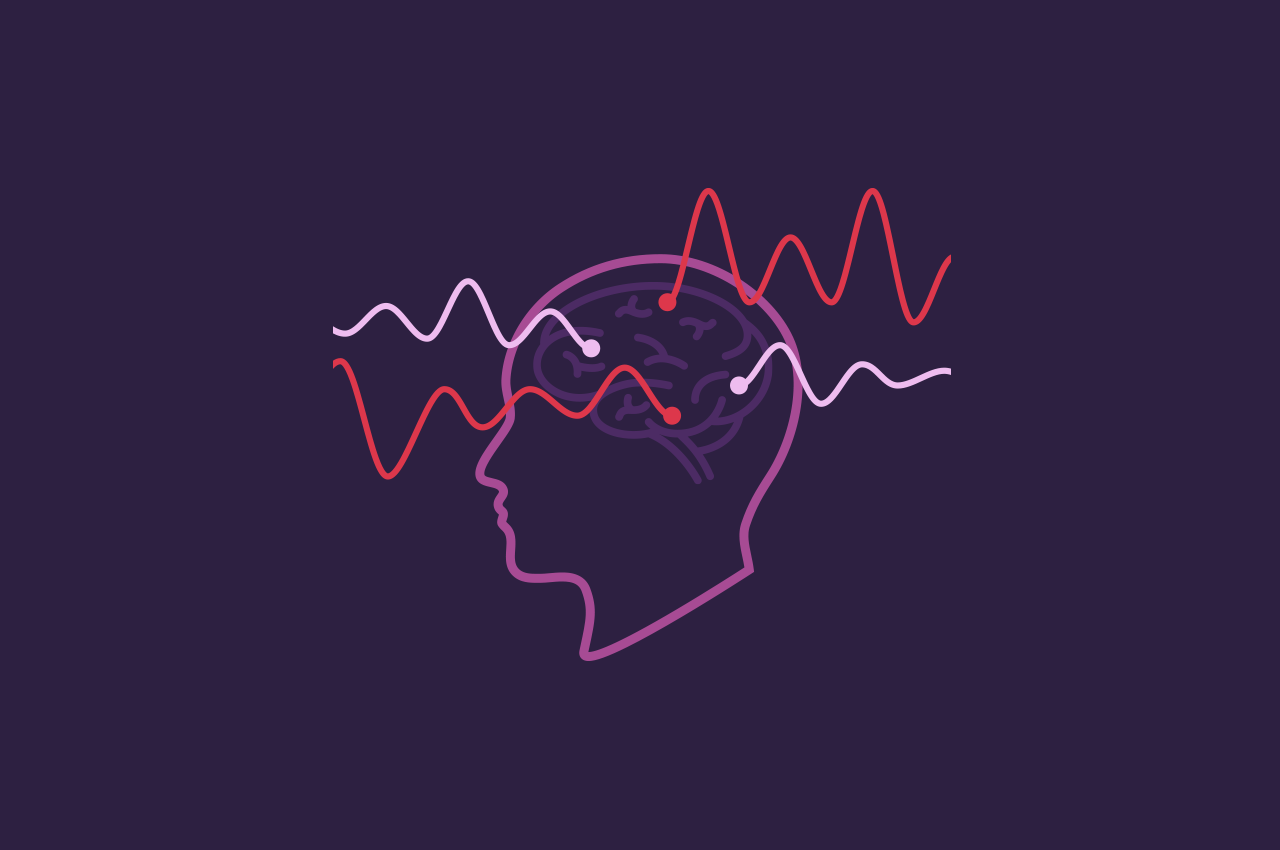Your brainwaves are linked to your state of consciousness, and this can influence your mood, energy, sleep and general health. Whether you’re at rest or doing an all-consuming activity, your brain is always active. Brainwaves are produced when electrical pulses from your neurons within your brain communicate with each other.
Brainwaves could also be considered a continuous flow of your consciousness. The flow can be fast or slow, depending on what you’re doing and how you’re feeling. For example, if you’re tired or dreamy, your brainwaves will be slower. And if you’re alert, they’ll be faster.
The five kinds of brainwaves
Your brainwaves are grouped into five different categories. Each one is associated with specific tasks and mental states. The speed of brainwaves are measured in Hertz (cycles per second) and are either slow, moderate or fast.
Here are the different brainwaves in order of their frequency (highest to lowest):
Gamma waves
The brainwaves with the highest frequency at 34 to 42 waves per second are called gamma waves. You’re in a gamma state when you are hyper-focused, learning new information for example.. In this state, you also store memories and become more aware of yourself and your environment. Musicians often experience gamma brainwaves as sharp concentration is necessary for their field of work.
Beta waves
When your brain is active and engaged in mental activities, it’s in a beta state. The beta state means you’re probably alert, focused, trying to solve a problem or making a decision. For example, a teacher would all be in beta when they’re working. Anyone engaged in a conversation would also have beta brainwaves. The frequency of beta brainwaves ranges from 15 to 40 cycles per second.
Alpha waves
When you’re in an alpha state of mind, your brainwaves begin to slow down. For example, if you’ve just completed a task and you sit down to take a break. These brainwaves are also present when you have quiet, slow thoughts and are generally calm; or if you take a walk after a meeting or meditate. The frequency of alpha waves is 9 to 14 cycles per second. These waves are important for alertness, learning and mental coordination.
Theta waves
When you’re asleep, at rest, in deep meditation or if your senses are generally withdrawn from your surroundings, you’re experiencing theta waves. For instance, when you’re driving for a long time, the repetitive nature of the task can put you into a theta state. The same thing happens when you take a shower, comb your hair or read a book. In this state, the frequency of your brainwaves is slow and normally ranges between 5 and 8 cycles per second.
Delta waves
Your brain is in a delta state when you are in a deep sleep or deep meditation. Delta brainwaves are important because they help your body reach a state that allows you to wind down. Winding down is necessary so you can experience deep, dreamless sleep that will heal and restore your body. Delta brainwaves have the slowest frequency at one-and-a-half to four cycles per second.
Brainwave training
If you’d like to tap into different brainwaves to achieve something specific, there are ways to train yourself.
Here are some tips:
If you want to use certain brainwaves to achieve a certain task listening to binaural beats can help. Binaural beats are sounds at different frequencies (but lower than 1000 Hertz so your brain can detect them).
If you listen to these sounds for a time, specific parts of your brain are activated. This can help you switch to different brainwaves. Find binaural sounds easily online.
Meditation can also help. Regular meditation has been shown to increase alpha activities in your brain and decrease beta brainwaves. This can be particularly helpful if you’re struggling to sleep.
References:
- https://brainworksneurotherapy.com/what-are-brainwaves
- https://www.scientificamerican.com/article/what-is-the-function-of-t-1997-12-22
- https://www.wellandgood.com/good-advice/brainwaves-biohack-sleep-health-focus/slide/4
- https://medium.com/change-your-mind/have-a-blast-with-your-brain-waves-612474163627

